Diamonds are stunning gemstones that deserve to be admired for their beauty. However, like any other precious item, diamonds can lose their luster when they become dirty. But what about issues like rust or stains? Let’s explore.
Firstly, diamonds cannot rust because rust is a result of iron oxidation, and diamonds are composed of carbon. They require different conditions for oxidation to occur, so rust is not a concern for diamonds.
However, if your diamond appears stained, it is likely due to accumulated dirt and grime. The good news is that you can prevent your diamond from getting dirty and restore its brilliance through proper cleaning techniques.
In this article, we will delve into the answers to these questions and more, providing you with valuable insights on how to care for and clean your diamond effectively. So, let’s jump right in and discover the best practices for maintaining the sparkle of your diamond.
DESIGN YOUR OWN ENGAGEMENT RING: START WITH A SETTING OR START WITH A DIAMOND. IT’S REALLY UP TO YOU!

Let’s Talk About Rust
Iron oxide, commonly known as rust, is a compound that forms when iron reacts with oxygen in the presence of water or moisture in the air. This reddish-brown compound is a result of the corrosion process, which involves several components.
Corrosion occurs through an electrochemical process that includes an anode (the metal that gives up electrons), an electrolyte (a liquid that facilitates electron movement), and a cathode (the metal that accepts electrons). When iron corrodes, the electrolyte facilitates the release of oxygen to the anode. As oxygen combines with the metal, electrons are released and flow through the electrolyte towards the cathode. This leads to the depletion of the iron anode, which becomes covered in metal cations in the form of rust.
Three essential elements are required for the corrosion of iron and the formation of iron oxide: iron, oxygen, and water. When water comes into contact with iron, two significant processes take place. Firstly, the water reacts with carbon dioxide in the air, creating a weak carbonic bond that acts as a more effective electrolyte. As the iron dissolves in this acidic environment, water begins to break down into oxygen and hydrogen. The released oxygen and dissolved iron combine to form iron oxide.
The electrons released from the iron anode flow towards the cathode or any other point of the iron. It’s worth noting that certain chemical compounds present in substances like acid rain or seawater enhance their electrolytic properties, making them more effective at accelerating the rusting process of iron and other metals.
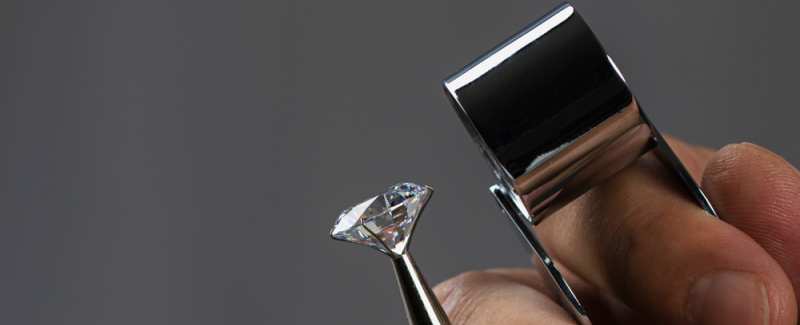
The Chemistry Of Diamonds
First and foremost, it’s important to note that diamonds are composed of carbon atoms.
The structure of diamonds consists of carbon atoms bonded to four other carbon atoms through strong covalent bonds. These bonds create a hard tetrahedral network where each carbon atom is closely connected to its neighboring atoms. This network is exceptionally stable and rigid, contributing to the hardness and high melting point of diamonds.
Now, let’s address the oxidation of diamonds. Diamonds do undergo oxidation, but they do not rust. Rust is a specific type of oxidation that occurs when iron reacts with oxygen in the presence of water. Diamonds, being structurally and chemically distinct from iron, do not experience rust.
However, diamonds can appear stained or dirty for two reasons. Firstly, the surface of the diamond may accumulate dirt particles, which can be easily picked up throughout the day. Oil residue and grime from your hands can adhere to the diamond’s surface, forming a thin layer that hinders light from entering the stone and making it appear dark and grimy.
Secondly, diamonds may have internal flaws known as inclusions that affect their appearance. Inclusions, such as carbon spots inside the diamond, can give the impression of staining. To determine whether the diamond looks dirty due to inclusions, a proper cleaning is recommended.
It’s important to emphasize that the term “stained” refers to the visual appearance of the diamond, not a change in its inherent color. The color of a diamond is determined by its atomic structure, which cannot be altered. Cleaning the diamond helps restore its natural beauty and remove surface dirt, but it will not change its color.
Diamonds are lipophilic, meaning they readily attract oil and grease, making it necessary to clean them regularly. Although diamonds are meant to be showcased and can be worn daily, everyday activities expose them to substances that can make them appear dirty. Personal care products, food residue, and various environmental factors all contribute to the accumulation of grime on the diamond’s surface.
Therefore, it is not a question of whether a diamond will get dirty but rather when it will get dirty. Regular cleaning and proper care are essential to maintain the scintillating color and brilliance that make diamonds so captivating.
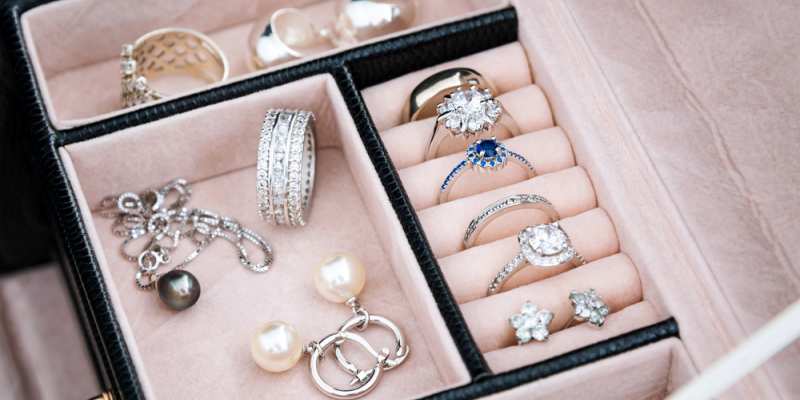
Know When To Take Your Diamond Ring Off
Diamond jewelry, despite its allure, is not impervious to damage or changes in appearance. Apart from regular cleaning, one of the simplest ways to preserve the cleanliness of your diamond is knowing when to remove it.
There are numerous situations where it is generally safe to wear your diamond jewelry, such as when washing your hands, going about your typical workday, or running errands around town.
However, there are certain instances where wearing your diamond ring unnecessarily exposes it to potential risks that can compromise its beauty.
For example, it’s advisable to take off your diamond ring when engaging in activities that involve extensive manual work and hands-on actions, particularly during meal preparation. Although food residue itself may not cause direct damage, it can gradually accumulate and make the cleaning process more time-consuming.
Likewise, it’s best to avoid wearing your diamond jewelry while vigorously scrubbing surfaces in the kitchen or bathroom, especially if protective gloves are not worn. Household products like bleach or window cleaner contain chemicals that could come into contact with your diamond ring and potentially react with the surrounding precious metals.
Swimming in a pool while wearing your diamond ring is also discouraged. Chlorine and other chemicals present in pool water can dull or discolor the precious metal of your diamond ring.
Lastly, it’s advisable to remove your diamond jewelry when participating in sports or weightlifting, not primarily to prevent staining, but to minimize the risk of chipping the diamond or misplacing the ring during outdoor recreational activities.
To avoid any potential risks, when in doubt, it’s best to store your diamond ring in a jewelry box or a safe place where it can be safely kept until you can wear it again.
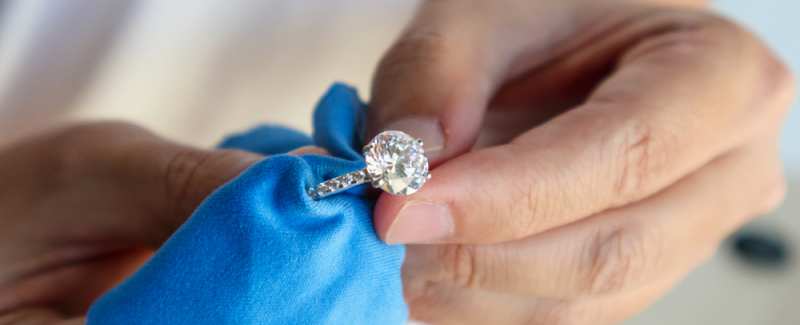
How To Clean Your Diamond Ring At Home
If your diamond has been affected by cosmetics like hairspray, lotion, makeup, or perfume, causing it to appear stained, you can easily restore its sparkle with a simple at-home cleaning method.
The recommended approach is to create a solution using warm water and dishwashing soap. Allow your diamond ring to soak in this solution for approximately 30 minutes. Next, gently brush the gemstone using a very soft toothbrush. Once brushing is complete, rinse the ring under warm running water.
Alternatively, you can use a body wash or shampoo instead of dishwashing soap as a cleaner for your diamond ring. The specific product chosen doesn’t matter as long as it is not moisturizing. Moisturizing products tend to leave a thin film on the ring, which should be avoided. When drying your diamond ring, steer clear of paper towels as they can potentially scratch the metal. Instead, opt for a soft cotton cloth or allow the ring to air dry.
As for the frequency of cleaning, it is advisable to clean your diamond ring once a week to keep it looking its best and prevent the accumulation of everyday dirt and oils. Additionally, it is recommended to have your diamond ring professionally cleaned by a jeweler twice a year. If your ring has been exposed to a significant amount of dirt, such as through outdoor activities or heavy kitchen work resulting in a stubborn layer of grime, it’s best to have it professionally cleaned more frequently. Professional jewelers possess the expertise to safely restore the brilliance of your diamond.
Of course, if you consistently remove your diamond ring during activities that may soil or damage it, you may require fewer cleanings. However, we have already discussed the importance of removing your ring during such activities.
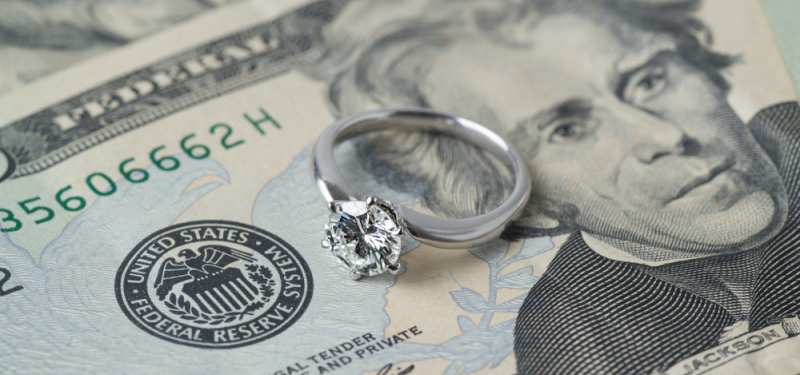
Insuring Your Diamond Ring
No, your diamond will not rust, and it is unlikely to get stained. However, considering everything we have discussed, it might still be wise to insure your diamond ring. There are two options available for insuring your diamond ring.
If you have homeowner’s insurance, you can purchase an extension specifically for your diamond ring. However, it’s important to note that filing a jewelry claim under your homeowner’s policy could potentially impact your entire policy. In the event of loss, theft, or damage to your diamond ring, your premium may increase, and your eligibility for the entire homeowner’s policy could be affected at renewal.
Alternatively, if you do not have homeowner’s insurance, you can obtain a separate policy through an independent agency specializing in jewelry insurance. These agencies can be beneficial if your current insurance provider does not offer the specific coverage you require.
Most homeowner’s insurance policies provide some level of coverage for jewelry. However, coverage is often limited by various factors, such as requirements to use specific jewelry replacement companies, coverage value limits, and the situations covered. It is crucial to contact your homeowner’s insurance and gather all the necessary information regarding your jewelry coverage. Never assume that you are automatically covered.
Obtaining an appraisal is essential to protect the value of your diamond ring. An appraisal will include key value elements such as carat weight, color, cut, clarity, and the number of diamonds in the ring. For higher-value pieces, most insurance companies will require an appraisal, while a purchase invoice or receipt may suffice for less expensive items. The best approach is to get an appraisal at the time of purchasing your diamond ring, ensuring that it reflects the latest market prices and accurately accounts for the specific characteristics of your gem.
Additionally, if your diamond is around half a carat or larger, your jeweler should provide a diamond certificate or grading report from a reputable gemological laboratory like the Gemological Institute of America (GIA). These certificates provide an evaluation of the diamond’s quality, listing all the necessary measurements for accurate valuation. Furthermore, the detailed information contained in the certificate can aid in identifying and recovering your diamond in the event of theft.
In summary, insuring your diamond ring is a prudent step to protect its value and safeguard against potential loss or damage. Obtaining an appraisal and ensuring you have a diamond certificate or grading report are crucial aspects of this process.
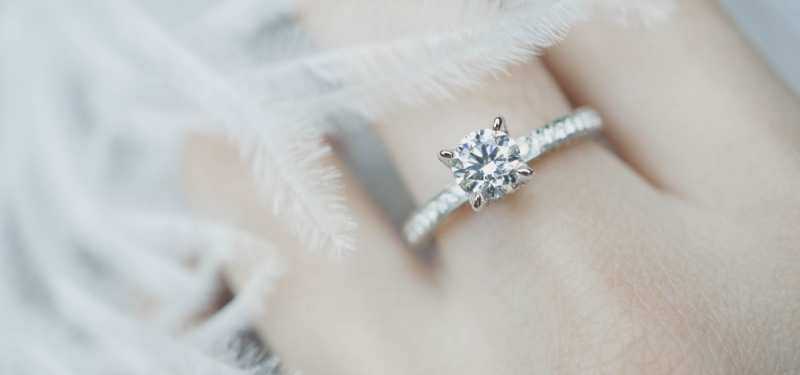
Bottom Line
Answering the question of whether diamonds can get rusty or stained may seem odd, but we appreciate your curiosity and interest in learning more about diamonds. In summary:
Rust, which is the result of iron oxidation in the presence of moisture, is not something diamonds can experience. Diamonds are composed of carbon, not iron, so they cannot rust.
While diamonds cannot get rusty, they can accumulate dirt, grime, and oils, which can make them appear stained. However, it’s important to note that these stains are not permanent and cannot change the chemical makeup of the diamond.
To maintain the beautiful shine of your diamond, regular cleaning is recommended. By removing your diamond jewelry when engaging in activities that may soil it, you can minimize the need for frequent cleaning and reduce the risk of damage to your diamond.
Taking proper care of your diamond will help it retain its dazzling sparkle for years to come.


